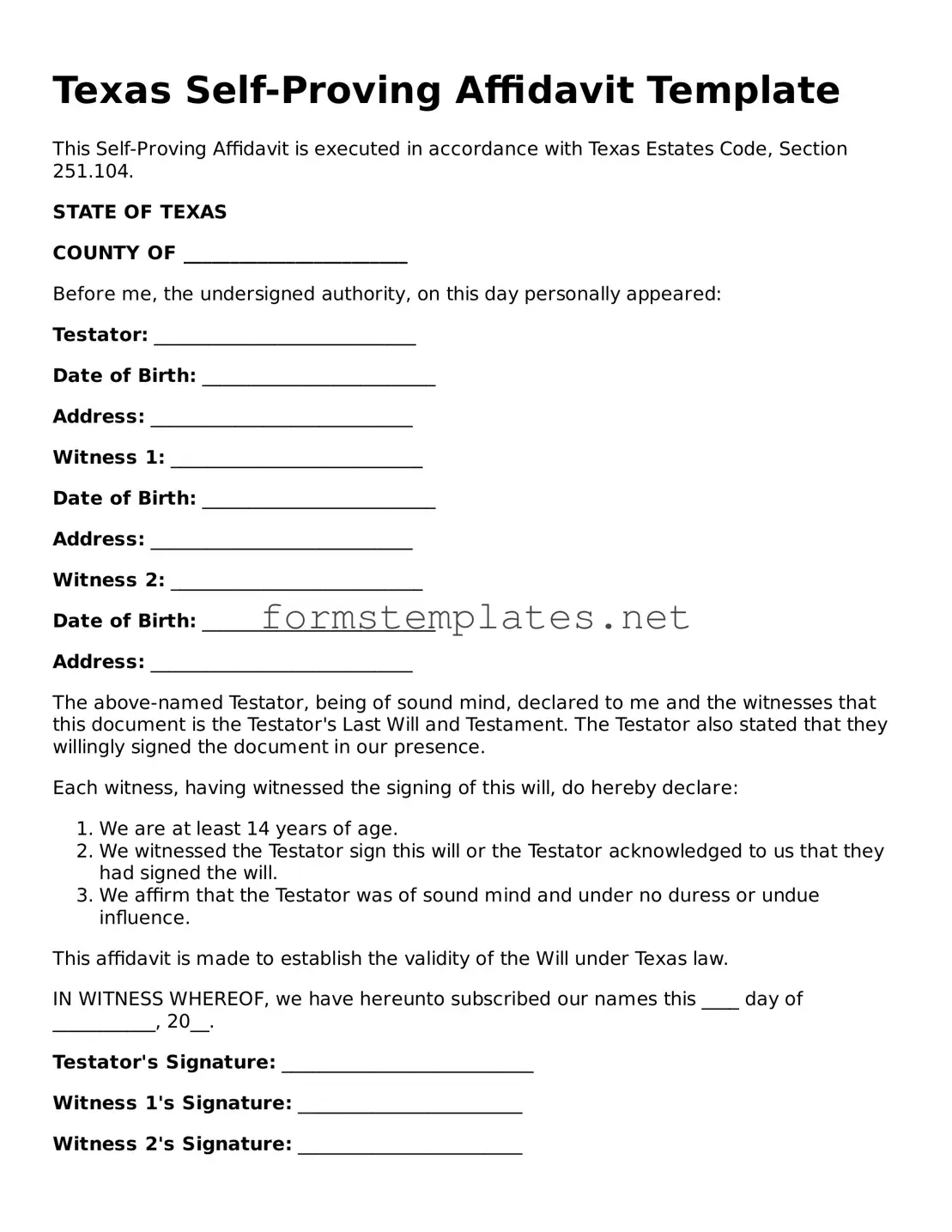Texas Self-Proving Affidavit Template
This Self-Proving Affidavit is executed in accordance with Texas Estates Code, Section 251.104.
STATE OF TEXAS
COUNTY OF ________________________
Before me, the undersigned authority, on this day personally appeared:
Testator: ____________________________
Date of Birth: _________________________
Address: ____________________________
Witness 1: ___________________________
Date of Birth: _________________________
Address: ____________________________
Witness 2: ___________________________
Date of Birth: _________________________
Address: ____________________________
The above-named Testator, being of sound mind, declared to me and the witnesses that this document is the Testator's Last Will and Testament. The Testator also stated that they willingly signed the document in our presence.
Each witness, having witnessed the signing of this will, do hereby declare:
- We are at least 14 years of age.
- We witnessed the Testator sign this will or the Testator acknowledged to us that they had signed the will.
- We affirm that the Testator was of sound mind and under no duress or undue influence.
This affidavit is made to establish the validity of the Will under Texas law.
IN WITNESS WHEREOF, we have hereunto subscribed our names this ____ day of ___________, 20__.
Testator's Signature: ___________________________
Witness 1's Signature: ________________________
Witness 2's Signature: ________________________
Sworn to and subscribed before me on this ____ day of ___________, 20__.
Notary Public: ___________________________
My Commission Expires: ____________________
